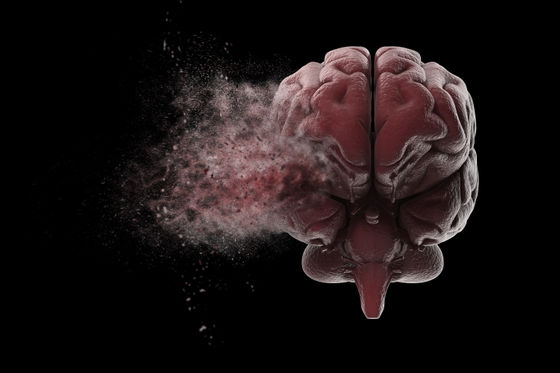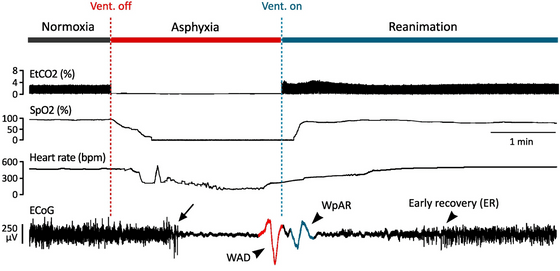What is the dramatic change 'wave of death' that occurs in the dying brain?

It has been announced that research analyzing the brain waves of rats that have fallen into an anoxic state has revealed the details of the near-death experience that occurs in the dying brain and the dynamic process that follows it called the 'wave of death.' Ta. This research is positioned as questioning the conventional medical wisdom that flattening brain waves is a definitive sign of irreversible cessation of brain function.
Laminar organization of neocortical activities during systemic anoxia - ScienceDirect
Brain dynamics of the 'wave of death' highlig | EurekAlert!
https://www.eurekalert.org/news-releases/1010894
Advances in medicine have made it clear that the transition from life to death is not an instantaneous event, but rather a slow, continuous process, and a complex phenomenon that can sometimes be reversed.
Previous research by researchers at Sorbonne University's Paris Brain Institute in France has shown that prolonged periods of anoxia cause a cascade of changes in brain activity.

First, when the brain is deprived of oxygen due to reasons such as cessation of breathing or pulse, the energy source
'At first, neural circuits appear to shut down, but then brain activity spikes, particularly gamma and beta waves. These waves are associated with conscious experience, and this 'It's thought to be a near-death experience told by someone who survived cardiopulmonary arrest,' says Severine Mahon, a neurologist at the Paris Brain Institute.
After that, neuron activity gradually declines, and the brain waves become flat, leading to a state of complete electrical silence. However, this calm is soon interrupted by a large wave known to experts as the 'wave of death', which changes the function and structure of the brain.
'This critical event, called anaerobic depolarization , causes the death of neurons throughout the cerebral cortex, meaning near death,' said lead author Antoine Carton-Leclerc from the Paris Brain Institute. 'It's a true indicator of the transition to cessation of brain activity, like a beautiful swan song .'

It is important to understand the nature of the death wave in order to resuscitate a person facing death and maintain brain function, but until now it has been unclear where in the cerebral cortex the 'death wave' occurs and how the death occurs. It was not known how the waves spread through the brain.
Therefore, a research team at the Paris Brain Institute conducted a study using rats and recorded electrical potentials and neuron electrical activity in different layers of the brain.
Comparing brain activity before and during anaerobic depolarization, they found that the 'death wave' was generated from neurons called pyramidal neurons located in the fifth layer of the neocortex. We found that it spreads toward the surface and inner white matter of the brain. Although this experiment was conducted on rats, researchers believe the same thing is happening in humans.
Below are the physiological response parameters of the rats monitored during the experiment. When oxygen deprivation (asphyxia) occurs due to interruption of oxygen supply (Vent.off), brain activity (ECoG) soon decreases, but a wave of anaerobic depolarization (WAD), or 'wave of death' By restarting the oxygen supply when anaerobic depolarization occurs,

This finding suggests that the deep layers of the cerebral cortex, where the death wave occurred, are the most vulnerable to oxygen deprivation. The reason for this may be that the activity of layer 5 pyramidal neurons requires a lot of energy. The researchers also found that when the rats' brains were reoxygenated, the brain cells replenished ATP, leading to repolarization of neurons and restoration of synaptic activity.
Professor Stéphane Charpier, head of the research team, said, ``From a physiological standpoint, death progresses over time and cannot be strictly separated from life. However, we now know that this does not necessarily mean a definitive cessation of brain function.In the future, we will aim to accurately elucidate the conditions for the recovery of these functions and to help resuscitate people with heart failure or lung failure. We need to develop supportive neuroprotective drugs.'
The rats used in this study were euthanized for autopsy, but the paper states, ``The experiments were approved by the French Ministry of Research and the Ethics Committee, and were conducted in accordance with European Union guidelines.'' All precautions were taken to minimize the number and stress of animals used in experiments, and all experimental procedures were conducted in accordance with guidelines for animal experimentation.''
Related Posts:
in Science, Posted by log1l_ks







